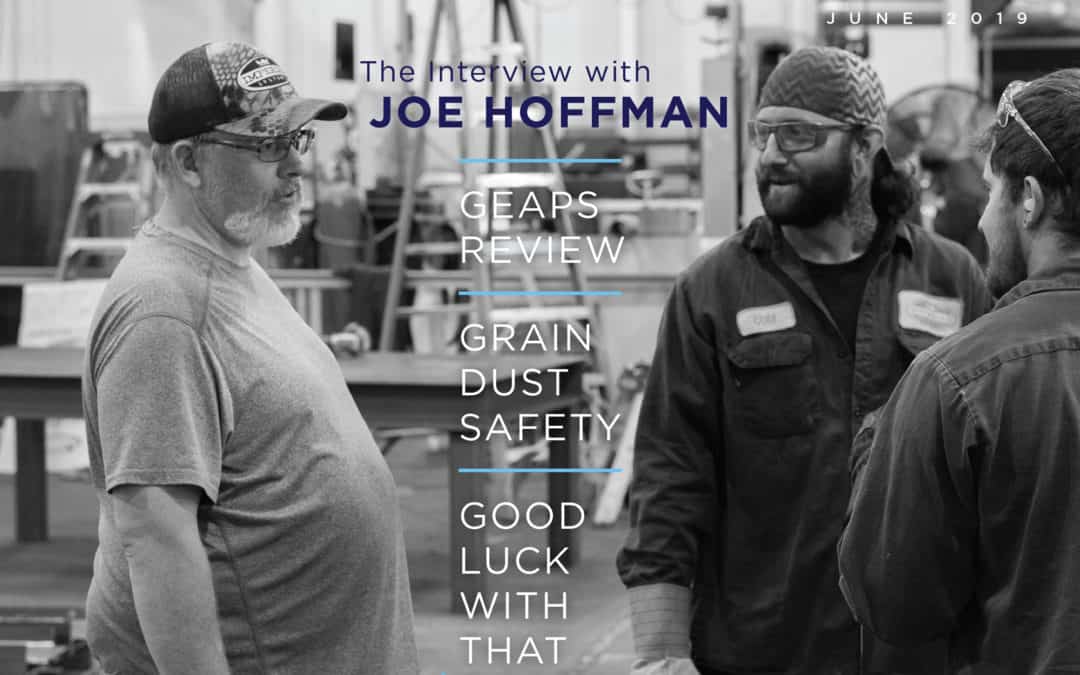
by Erin Long | Jul 19, 2019 | Uncategorized
Take a look at Dusty Jobs 9! We talk about the GEAPS show in New Orleans earlier this year as well as discussing safety in grain processing facilities. Charlie is back for an extended version of ‘Good Luck With That’, and we interview our plant manager, Joe Hoffman. If you would like a printed hard copy of this issue of Dusty Jobs, contact your Imperial Systems, Inc. representative.
Click the cover to download and print the newsletter.
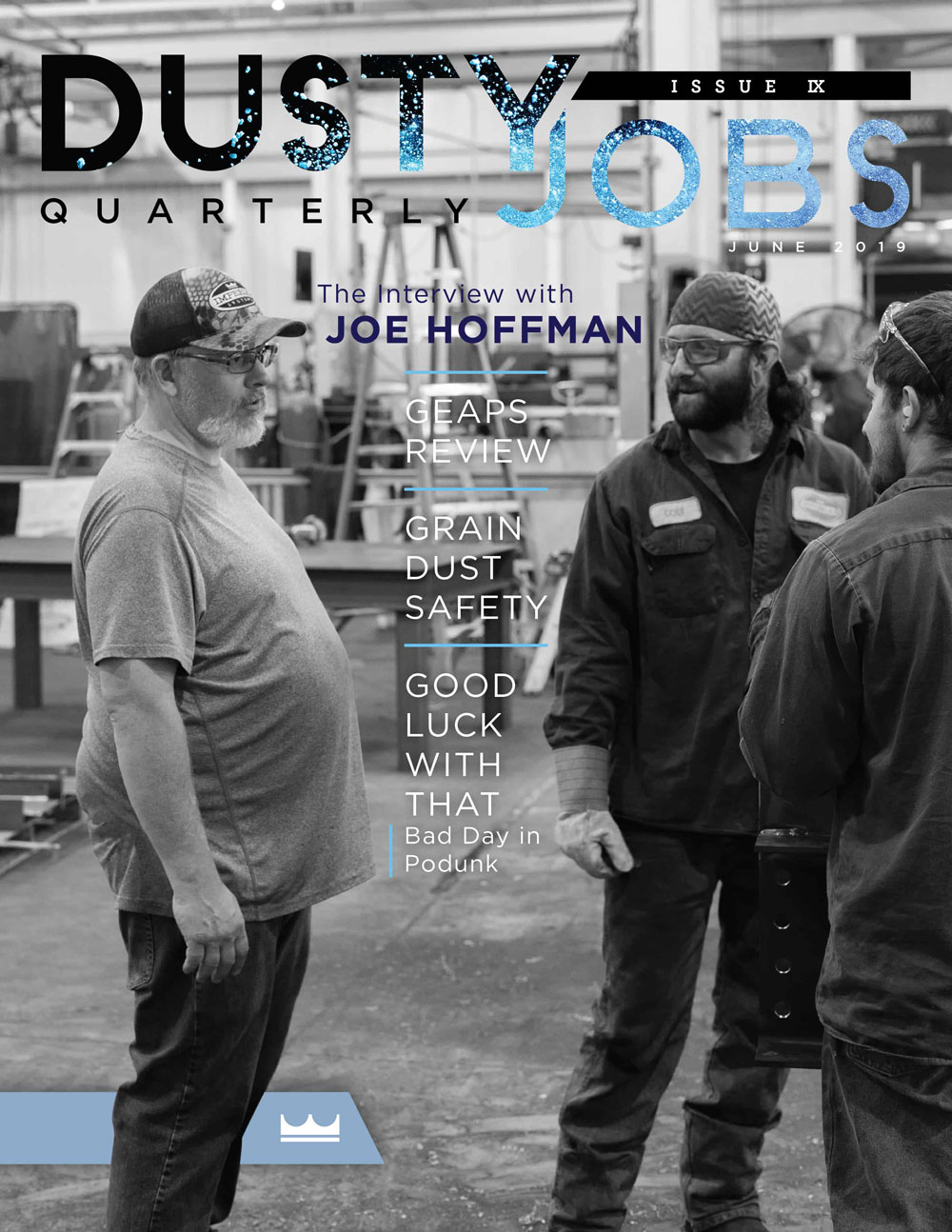




A Letter from the Production Control Manager
 I started working at Imperial Systems in February 2015 as an Accounting Clerk. As the company grew over the next few years, I started taking on more responsibilities. I started helping with coordinating production, keeping information flowing between accounting and the shop. I worked with them to set schedules for shipping, hours planned for each job, and exactly where the job was with current hours.
I started working at Imperial Systems in February 2015 as an Accounting Clerk. As the company grew over the next few years, I started taking on more responsibilities. I started helping with coordinating production, keeping information flowing between accounting and the shop. I worked with them to set schedules for shipping, hours planned for each job, and exactly where the job was with current hours.
As of last year, I moved into a new role as Production Control Manager. This takes the production control responsibilities I already had and kicks them up a notch. I’m still transitioning into this role, since I’ve been helping with accounting while someone was out on leave. Now, I’m looking forward to diving in and getting a good grasp on all the new responsibilities in front of me.
With the company growing, I’m going to be responsible for handling our shop schedule and keeping production on track. I’ll help solve problems and coordinate any changes that need to be made. I’ll keep track of the shop’s capacity and monitor when we’re over or under capacity. There’s a lot to manage with so many projects being scheduled, in production, and shipping out.
As a young girl, I would go to take-your-daughter-to-work events with my dad, and I always finished the day with the feeling that his company and co-workers were like part of his family. The company made sure to take care of their employees and truly cared about the employees’ success.
Since then, I have always wanted to find that in an employer and until Imperial Systems, I had not found my home in the business world. Shortly after starting, though, and with each additional day I work here, I realize just how much Jeremiah cares about this company as well as everyone who works here. Each day I am excited to wake up and come to work to help this team reach its goals. I love that I am challenged each day to come up with something that will better myself, which will directly lead to our company’s success.
I am just so thankful every day to be able to say I found my “work” home and gained 50-some “family” members, and I do not know if I would have been able to find this working anywhere else.
– Kaylee Smead, Production Control Manager
Read more

by Erin Long | Jul 17, 2019 | Uncategorized
Hammer mills process grain and other products in agriculture processes. Industrial hammer mill material handling requires dust collection to prevent combustible dust fires. Handling and transporting agriculture process materials are covered under NFPA 61 and OSHA 1910.272. Many other industries use hammer mills, which produce dust that may be combustible.

Hazards in Material Handling Equipment
Grain dust becomes flammable when it is airborne. Places in the process where grain dust becomes airborne include:
- hammer mill crushers
- conveyor belts and transfer points
- bucket elevator conveyors
- mixers
- loading and unloading points
- dryers
- spouts and hoppers
Material handling systems produce dust, and they also produce opportunities for ignition. A hammer mill grinder is one element of the agricultural process that produces large amounts of dust. A bucket elevator is another one, partly because the material moves around. It can also cause ignition because the bearings can overheat.
In addition to hammer mill material handling, dust can accumulate in other grain processes in agriculture. Some agricultural dust can be very combustible. Managing risk means removing elements of the so-called explosion pentagon. This includes oxygen, ignition source, fuel, containment, and dispersion. Oxygen will always be present, and the dust acts as a fuel. In various parts of the process, the material may be inside a closed space (containment). Therefore, the parts of the explosion pentagon that can be controlled are ignition sources and dispersion. This is true for hammer mill material handling and other process areas.
 Controlling ignition sources includes following all electrical safety standards and watching all equipment, like bucket conveyors, for overheating bearings. Removing all ignition sources is almost impossible. However, getting rid of as many as possible reduces the risk.
Controlling ignition sources includes following all electrical safety standards and watching all equipment, like bucket conveyors, for overheating bearings. Removing all ignition sources is almost impossible. However, getting rid of as many as possible reduces the risk.
Keeping dust from becoming airborne (dispersion) keeps a deflagration from starting. Once airborne dust ignites, the flame must not reach other areas. This is especially true for areas that could cause injury to people. Dust collection systems can prevent dispersion and the spread of a deflagration.
Dust Collection for Hammer Mill Material Handling
Depending on the material, hammer mills can produce a large amount of dust. Many other components of material handling systems, like bucket elevators, also produce dust. NFPA and OSHA standards require control of this dust. Dust must not build upon surfaces or become airborne. A well-designed dust collection system will prevent these.
Some agricultural processes will use a central baghouse with capture hoods located at various dust generating spots, including at the discharge of a hammer mill. This technique for hammer mill material handling can be very effective, especially if one central baghouse can handle the capture points.
Spot filters can be a very effective solution for larger facilities, or for ones where a central baghouse might be too far away. Spot filters can be located at many kinds of capture points for material handling equipment. These include bucket elevators, conveyors, mixers, hammer mills, and loading/unloading points. Cartridge collectors, which are small and compact, can be sized to fit at any of these points. Because the pulse cleaning of the filters is very efficient, filters can last a long time.
Many agricultural process facilities use a combination of both types of dust collection, with baghouses or large cartridge collectors in a central area and spot filters on more remote capture points. Both baghouses and cartridge collectors can work well for hammer mill material handling in agriculture. Depending on how fine the material powder is, a spot filter cartridge collector can be the best solution. This will keep fugitive dust from escaping at a capture point.
Learn more about our Grain Dust Collection Systems.
Read more
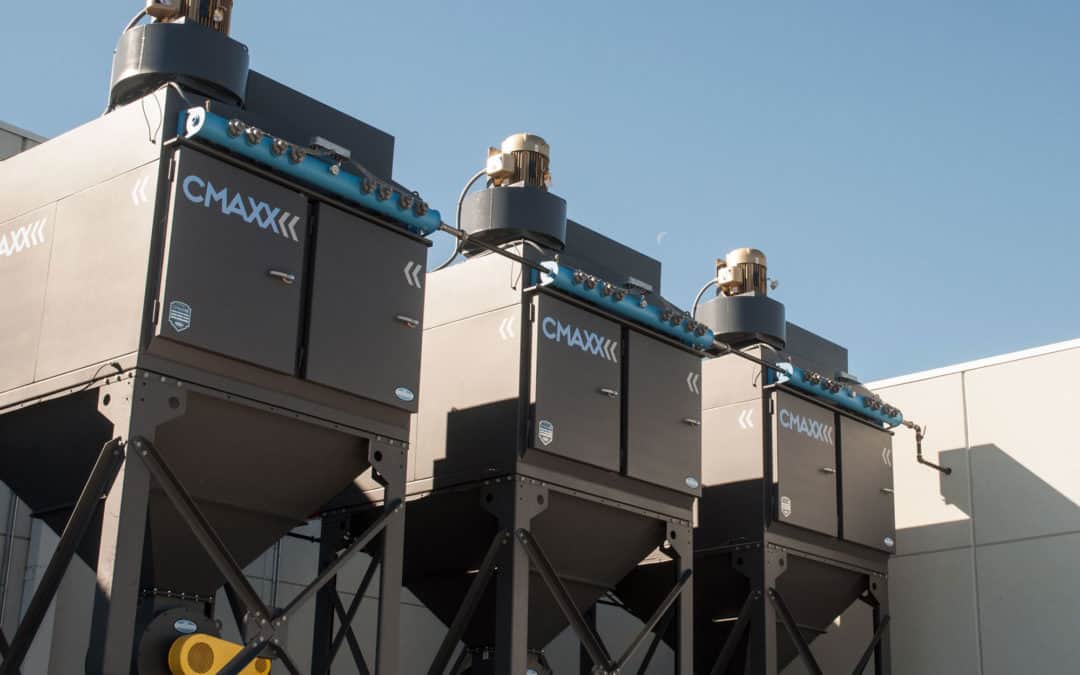
by Erin Long | Jul 10, 2019 | Uncategorized
Wondering if that aging thing behind the building needs a little work? One company put money into a dust collector upgrade. As a result, it ended up saving them from serious property damage and expensive repairs.
The dust explosion index dustsciencesafety.com issued an incident report. It chronicles that a company, which makes specialty automotive parts, suffered a metal dust fire in May 2018. Metal dust fires can be dangerous and explosive. So major damage could have been done to the building and people in it.
Luckily, the company had recently invested in upgrading its dust collection system, which includes several collectors. Thanks to this investment, the fire never escaped the dust collector. Firefighters arriving on the scene noted that because the fire was limited to the dust collector, it was easy to manage. Without the dust collector upgrade, the fire might have spread through the building.
Combustible Dust Hazards
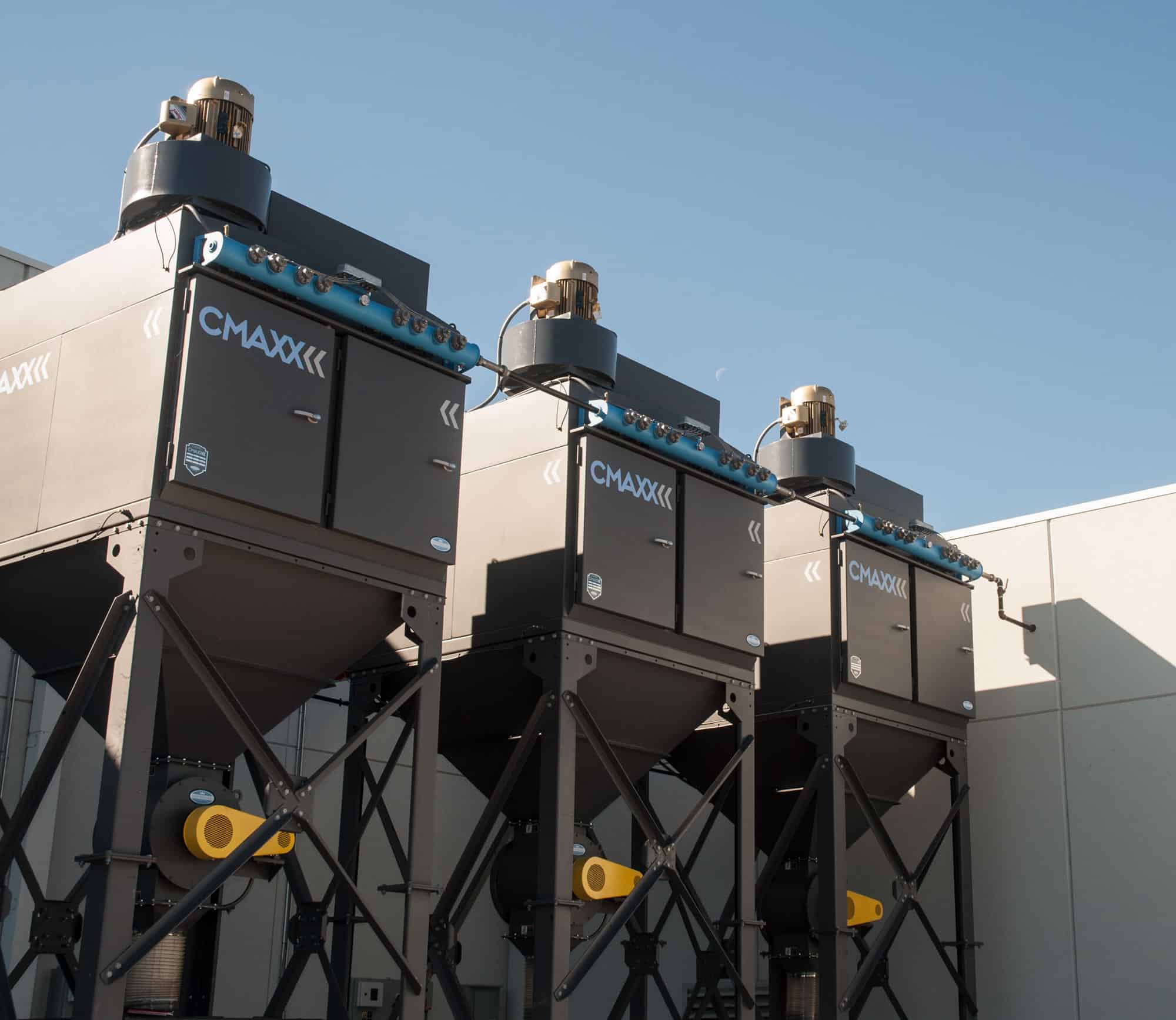 What kind of dust collector upgrade might save your building or employees from serious harm? Some old dust collectors may not have the kind of fire and explosion prevention devices required by NFPA standards on newer equipment. In some cases, it may be a poor system design. In other cases, the company or the system designers may not have known the dust could be combustible.
What kind of dust collector upgrade might save your building or employees from serious harm? Some old dust collectors may not have the kind of fire and explosion prevention devices required by NFPA standards on newer equipment. In some cases, it may be a poor system design. In other cases, the company or the system designers may not have known the dust could be combustible.
NFPA 652 requires that all facilities that handle combustible dust conduct a dust hazard analysis. It must include inspecting for any risk factors and figuring out how to fix them. The dust hazard analysis may reveal that the procedures for controlling combustible dust aren’t good enough. In that case, a dust collector upgrade or other improvements will be needed.
Fire and Explosion Prevention for Dust Collectors
One method of controlling fire or explosion is to prevent sparks or flames from getting into the collector at all. Install a spark arrestor, which is a passive protection device, in the ductwork before the dust collector. It will stop most, but not all, sparks. Another option is an active system with a spark detector. Once a spark or flame is detected, a chemical isolation system or abort gate triggers to isolate or divert it.
Other passive methods of fire and explosion control include explosion isolation valves. An advancing pressure wave will close the valve and isolate the explosion from moving forward. Probably the simplest tool, explosion venting, continues to be effective in releasing pressure from the collector. Also, consider a chemical suppression system inside the dust collector. It will suppress a fire that has reached the collector or started inside it.
If a dust collector is located inside a building, there must be a way to vent an explosion safely. Use a flameless explosion vent if an explosion can’t be vented outdoors. These are expensive and can allow dust to escape, so they shouldn’t be used with highly toxic materials. If there is no choice but to locate a dust collector inside, this may be the only feasible option.
Is a Dust Collector Upgrade Worth the Money?
Newer methods of fire and explosion control such as chemical isolation and suppression are dust collector upgrade options. Inspect old systems for any safety features that aren’t operating properly or don’t meet new standards. For example, a dust collector might not have enough explosion venting to meet current safety standards. Further, the filter media in the collector might be flammable instead of flame retardant material.
For the company mentioned at the beginning of this story, the decision to upgrade was very beneficial. Improving fire and explosion protection of their multiple dust collectors saved them an enormous amount of money. Firefighters noted that safety features kept the fire isolated inside the dust collector where it started. Had the fire spread back through the ductwork, large sections of the building could have been damaged.
Consider adding some new fire protection features, or upgrading an existing dust collector. Either costs much less than repairing fire-damaged buildings. As they often say, if you think safety is expensive, try an accident.
Read more
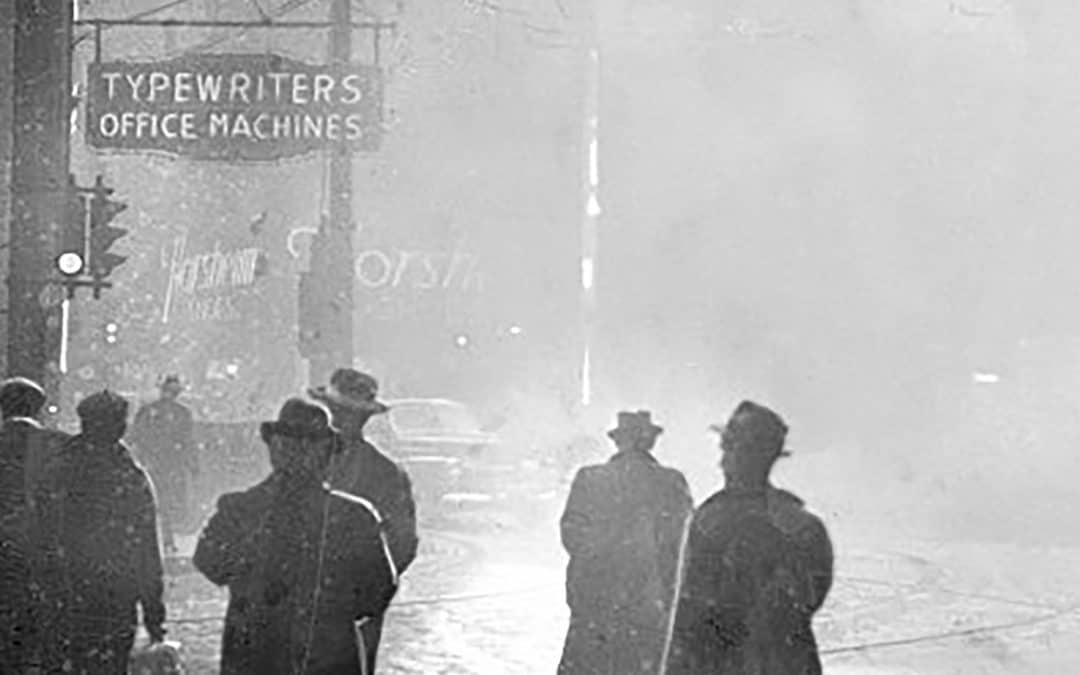
by Erin Long | Jun 19, 2019 | Uncategorized
The history of dust collection begins with a problem that needed to be solved.
It was the early 1800’s in Pittsburgh, PA. Sulfur and other fumes from burning bituminous coal covered the city with some of the worst smoke pollution in the country. Pittsburghers were used to constantly cleaning the black dust off everything, even inside their houses. By 1880, millions of tons of coal were being burned in the city each year, giving it some of the worst air quality in the United States.
People who grew up in the city in the early 1900’s report cleaning black dust and grime off their shoes and clothes, gray curtains that could never be kept white, and buildings and statues stained black. Workers from the steel mills came home covered with black coal dust. In the winter, gray snow fell over the city. Bituminous coal was plentiful in the area but is the dirtiest form of coal when burned.
Regulations were passed in Pittsburgh and other industrial cities, but without a suitable replacement, the factories and mills continued burning coal. Companies made some attempts to filter coal dust out of the air, but the amount of dust overwhelmed basic cloth filters. Simple cyclones, where air movement inside the chamber causes particles to drop out of the air flow, only captured large dust and didn’t restrict the flow of fine dust and smoke. Tubes or sheets of fabric became immediately coated with dust.
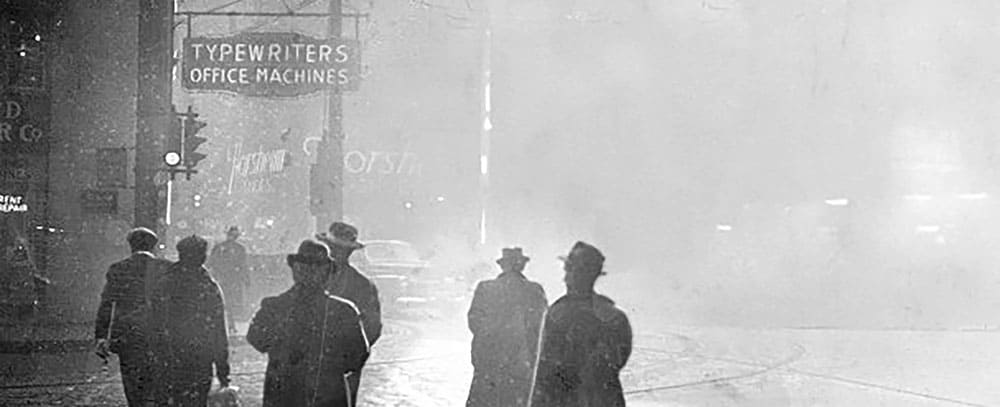
NEW DUST COLLECTION OPTIONS
It wasn’t until the 1920’s that inventors began to patent filtration systems to remove dust more effectively. These early dust collectors needed to be able to clean their filters to keep them from being overwhelmed with dust. In the early history of dust collectors, this cleaning worked by hanging filters from a frame that would periodically shake them to get rid of excess dust.
Shaker bags continued to be used for many years, but lack of efficiency and constant maintenance on the moving parts limited their usefulness. The biggest producers of dust included industries like foundries and steel mills, dealing with thick, heavy dust that shaker bag collectors struggled to handle.
In the mid-1900’s, environmental regulations became more common and major polluters came under pressure to clean up the massive amounts of dust they generated. Shaker bags and basic fabric filters could not handle the task. Pittsburgh, famous for its steel mills and still burning massive amounts of dirty bituminous coal from nearby mines, badly needed a new method of dust collection.
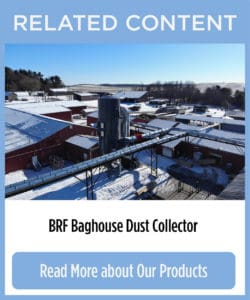 Reverse air baghouses were invented around this time, shortly followed by pulse jet baghouses. These provided tremendous improvements in dust collection by setting up an arrangement of filtration bags that could be cleaned by fans or compressed air pulses instead of shaking. These methods kept the bags cleaner and increased the efficiency of the filters. These types of baghouses came into regular use in the 1950’s and 1960’s, but there were still not very many requirements for companies to use them.
Reverse air baghouses were invented around this time, shortly followed by pulse jet baghouses. These provided tremendous improvements in dust collection by setting up an arrangement of filtration bags that could be cleaned by fans or compressed air pulses instead of shaking. These methods kept the bags cleaner and increased the efficiency of the filters. These types of baghouses came into regular use in the 1950’s and 1960’s, but there were still not very many requirements for companies to use them.
The invention of baghouses brought a new era in the history of dust collection. Both types of baghouses are still in use today, and they continue to work well. They are especially useful in applications with high temperatures and high humidity. Bags are now made of a wide variety of materials specialized for different needs. They are still workhorses of the dust collection industry.
A NEW ERA OF REGULATIONS
In the 1970’s and 1980’s, increases in regulations required companies to work harder to clean up dust, fume, and chemical emissions. Cartridge dust collectors provided a smaller profile with highly efficient pleated filters that offered a larger surface area for filtration. These collectors took advantage of a pulse jet cleaning system like the one used on some baghouses. Cartridge collectors became popular for their smaller size and the ease of changing filters compared to baghouses. They are used on many dust applications, especially those producing very fine dust and fumes.
With increasing regulations on hazardous material emissions, filters like HEPA (high efficiency particulate arrestor) became more common. These filters are extremely efficient but will also become quickly overloaded in any heavy use setting. Common uses include hospital, pharmaceutical, and food processing clean rooms. In the history of dust collection in industry, they have become useful as after-filters for applications with very toxic materials like lead dust, capturing anything that gets past the regular filters.
Industries that need to control chemical air pollution may use options such as wet scrubbers or electrostatic precipitators. Wet scrubbers use water or other liquids to stick to chemicals in the air flow and cause them to settle out of the air. Wet scrubbers are much higher maintenance than dry dust collection systems, but they may be necessary for chemical contaminants. Electrostatic precipitators use high voltage direct current to give particles an electric charge, causing them to stick to electrodes in the collector.
These high-tech entries into the history of dust collection are useful for specific applications. Dry dust collectors like cartridges and baghouses will not usually work for mist or harsh chemicals. Wet scrubbers are used when the air contains either a gas or gas mixed with particles. Electrostatic precipitators are often used in coal and oil power plants and in refineries. These types of systems work best when the electrical conductivity and resistance of the particles stays consistent.

FROM THE HISTORY OF DUST COLLECTION TO THE FUTURE
In cities like Pittsburgh with a long history of dust collection issues, every possible type of air pollution control has been employed to make the city clean and healthy. Pittsburgh has traded most of its coal-burning steel manufacturing for newer, cleaner industries. It has been rated as one of the country’s most livable cities by many publications. Technology, research, and healthcare have become dominant industries, but the legacy of the city’s heavy industrial days remains with plenty of factories still in operation. Behind or off to the side of many of these factories, you’ll see a dust collector at work, helping Pittsburgh keep moving away from the grime and dust of its history.
Companies that manufacture dust collection systems are concerned with air quality. They are also concerned with safety. The industry keeps making new innovations that prevent people from being injured by combustible dust fires or explosions. New dust collectors like the CMAXX and BRF baghouse are safer and more efficient than ever before.
Read more
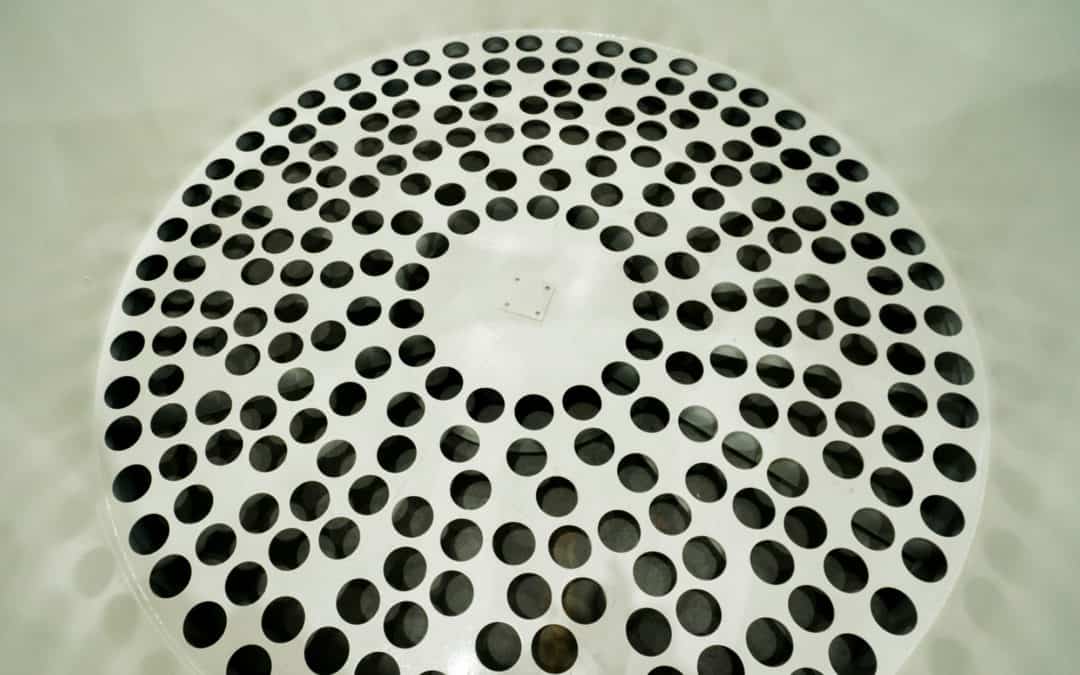
by Erin Long | Jun 5, 2019 | Uncategorized
For a baghouse to function correctly, system designers need to perform a bag filter calculation. So how do you calculate the air-to-cloth ratio of your bag filters? Some websites offer simple formulas to estimate the correct air-to-cloth ratio. However, a good system designer knows that every application and every material is a little different.
System designers also do a compressed air requirement calculation for bag filters. Because without proper cleaning, bags become covered with dust which throws off the calculated air-to-cloth ratio. Therefore, getting these two calculations right makes sure your baghouse runs at full efficiency.
 How to Calculate Air-to-Cloth Ratio in Bag Filters
How to Calculate Air-to-Cloth Ratio in Bag Filters
An air-to-cloth ratio compares the amount of air going through a square foot of filter area. If you know the total CFM of the system and you know the amount of filter area you have, you can calculate this ratio.
For example, if you have 10,000 CFM through your collector and 5,000 square feet of filter area, your ratio is 10,000:5,000. But it’s much simpler to convert this to a ratio of 2:1. The air-to-cloth ratio can be anything from 1:1 to 3.5:1.
What makes the difference in bag filter calculation? Often, it’s the type of dust that the system collects. Different types of material will change how you calculate the air-to-cloth ratio in filter bags. Most companies that design baghouses know the general cloth area of their filter bags. A filter bag calculation can also be made because filter bags are round. If you know the diameter of the bag, multiply this diameter by 3.14 to get the circumference. (Think back to high school math and the circumference of a circle.)
Therefore, the circumference of the bags (diameter of the bag x 3.14) multiplied by the length of the bag will give you an approximate bag surface area. There are 144 square inches in a square foot. Since the diameter of the bag will be measured in inches, the bag surface area must be measured in inches too. Use this surface area in the air-to-cloth ratio.
Ask the Manufacturer First
You may never need to know how to do these calculations. Fortunately, many filter bag manufacturers know the general surface area of their bags. Also, a system designer usually knows the surface area of bags that need to go in a collector. What you do need to know is why the surface to air ratio matters. Consequently, a wrong bag filter design calculation can result in a collector with a ratio that causes serious problems.
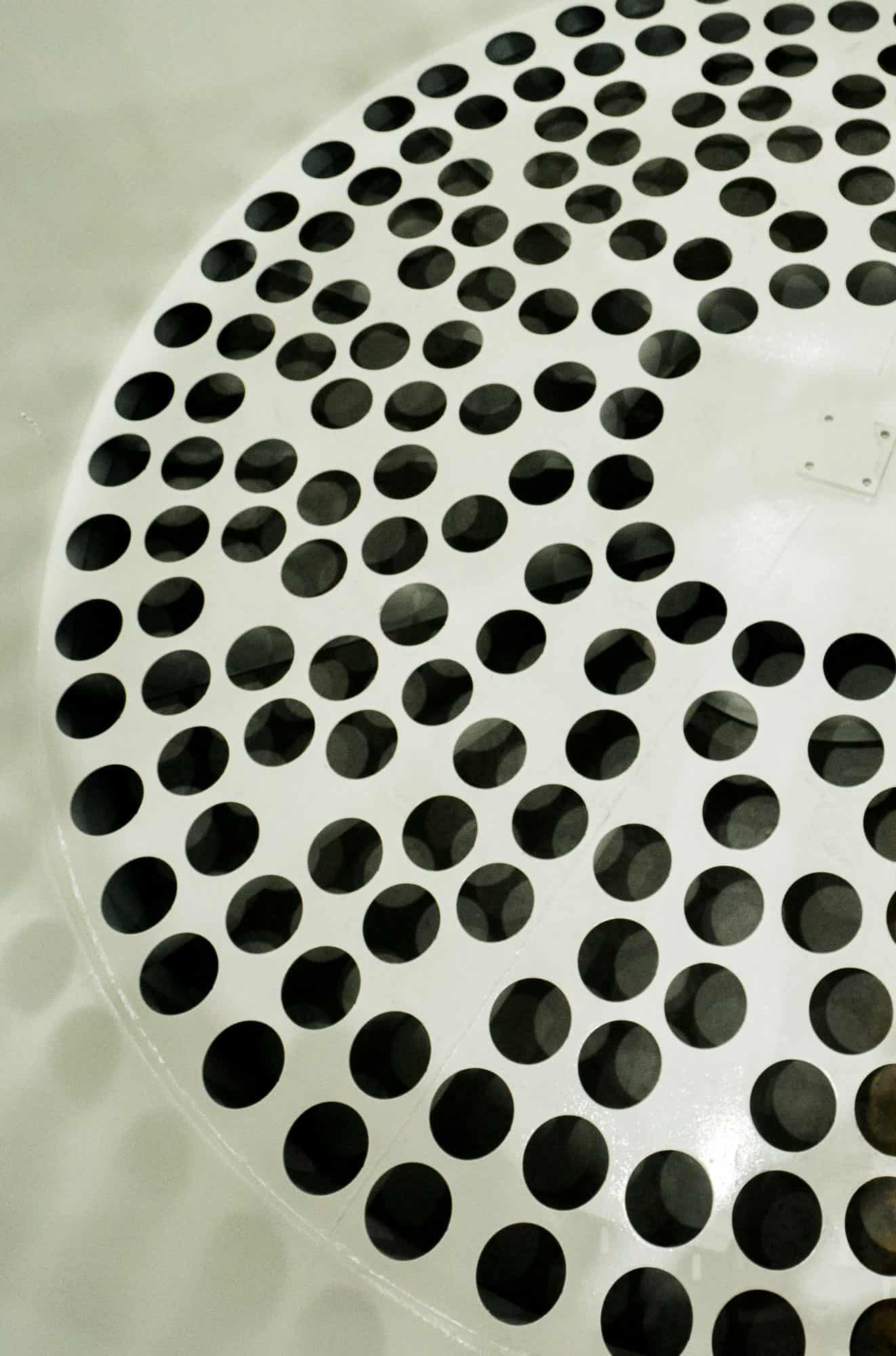 Importance of Correct Air-to-Cloth Ratio Calculations
Importance of Correct Air-to-Cloth Ratio Calculations
The correct air-to-cloth ratio determines the efficiency and life span of your filters. Above all, buying and replacing filters may be the most expensive and time-consuming part of dust collector maintenance. The correct bag filter calculation extends the life span of your filters and keeps them working efficiently. Not having enough cloth for the air in your system results in low filter life and damaged or overloaded filters.
Different materials will require different air-to-cloth ratios. Similarly, different applications also demand changes to the air-to-cloth ratio. An ambient system usually filters the air with a low overall amount of particulate. In contrast, a source capture on plasma cutting collects much more material. Wood, fiberglass, and other materials affect filters differently. Therefore, you should consult with someone who has experience in air-to-cloth ratio calculations for your type of material.
Compressed Air Requirement Calculation for Bag Filters
Even if a system has the correct air-to-cloth ratio, it still needs to clean the filters correctly. For instance, some baghouses are cleaned with airflow from a fan. The fan sizing will be part of the overall system design. Other baghouses use pulses of compressed air to clean the filters. For these, the calculation of compressed air requirements is important.
Compressed air requirement for bag filters determines how long the bags will last and how efficient they will be. Some compressed air cleaning systems are timer operated. This means that pulses of compressed air clean the bag filters at a designed time. Dust collectors can also have differential pressure pulse control. In this case, a rise in the differential pressure triggers a sensor to activate a pulse. The compressed air only pulses when the filters need it. This means that the compressed air requirement for the baghouse is lower.
The size of the piping and valves used can also affect the compressed air. A baghouse should be operated with the bag filters, valves, and other equipment that came with the system, or an appropriate replacement from the manufacturer.
Valves and other parts of the compressed air system can develop leaks and waste compressed air. As a result, there will be less efficient pulsing. Therefore, systems should be checked regularly for any leaks or failing valves. The compressed air requirement calculation for bag filters is only accurate if the entire system operates as designed.
Read more about bag filters here.
Read more
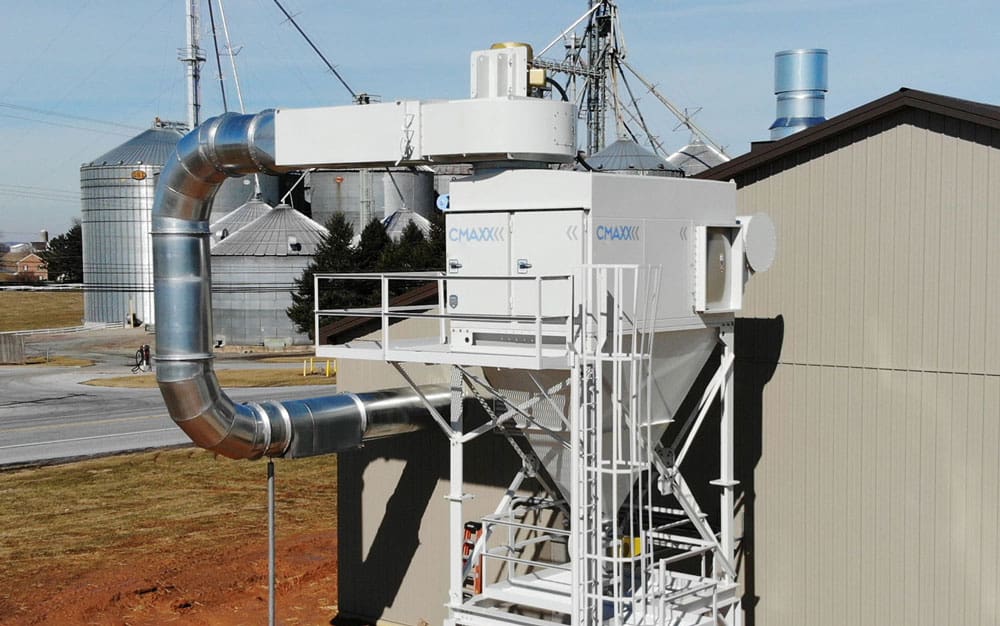
by Erin Long | May 30, 2019 | Uncategorized
Manganese is a common metal, and the human body needs it in very small amounts to stay healthy. However, excessive manganese exposure causes serious neurological problems. This is most likely to happen to welders and other metalworkers. You can find manganese as an alloy in steel and sometimes aluminum. Consequently, welding or cutting these metals can release dangerous amounts of manganese.
Limits are already low on health hazards like beryllium and respirable crystalline silica. Manganese is likely to be one of the next materials to see increased regulation. It’s not the only welding exposure that workers need to be concerned about. But it’s another good reason to manage weld fume exposure.
Where would I find manganese in metalworking?
Modern steel production relies on manganese to remove oxygen and sulfur compounds. Many types of steel include it because as an alloy, it makes steel stronger. This means that welding or cutting fumes from steel are likely to contain manganese. In addition, welding manganese exposure can come from manganese contained in welding rods.
Manganese is also used as an alloy with aluminum, where it protects from corrosion. This is not a major source of exposure for metalworkers in general, though. This type of aluminum alloy is popular for food and beverage containers.
What are the limits on manganese exposure?
OSHA’s limit on manganese exposure is 5mg/m3 over an eight-hour workday. NIOSH, the research branch of OSHA, has looked at recent studies. As a result, they recommended a limit of no more than 1mg/m3 over the same period of time.
One research study in 2016 found that over many years of working as a welder, manganese could cause serious neurological symptoms. This is true for exposure levels as low as mg/m3 . The study also found that higher levels of welding exposure to manganese caused more symptoms.
This research shows that just following OSHA regulations may not be enough to prevent manganese exposure symptoms from metalworking.
What are some manganese exposure symptoms?
Manganism is the most severe symptom. This condition of manganese exposure looks like Parkinson’s disease. Specifically, one experiences tremors, balance problems, weakness, and problems with muscle control. Following current OSHA standards, exposure should not be high enough to cause this condition.
However, many researchers find that even at exposure levels much lower than OSHA standards, welders still develop symptoms. Said researchers include the Washington University School of Medicine. These manganese exposure symptoms include muscle stiffness in arms and legs and problems with balance and coordination.
Symptoms take time to appear and usually happen after years of exposure. Although, one could attribute them to just getting old. For this reason, research is needed to show that manganese exposure could cause them.
NIOSH reviewed research on occupational health hazards, leading to a recommendation of lowering the exposure limit. Their findings indicate that welders develop these symptoms faster and more severely than non-welders. Most importantly, even at levels much lower than OSHA standards.
How do you control metalworker exposure to manganese? 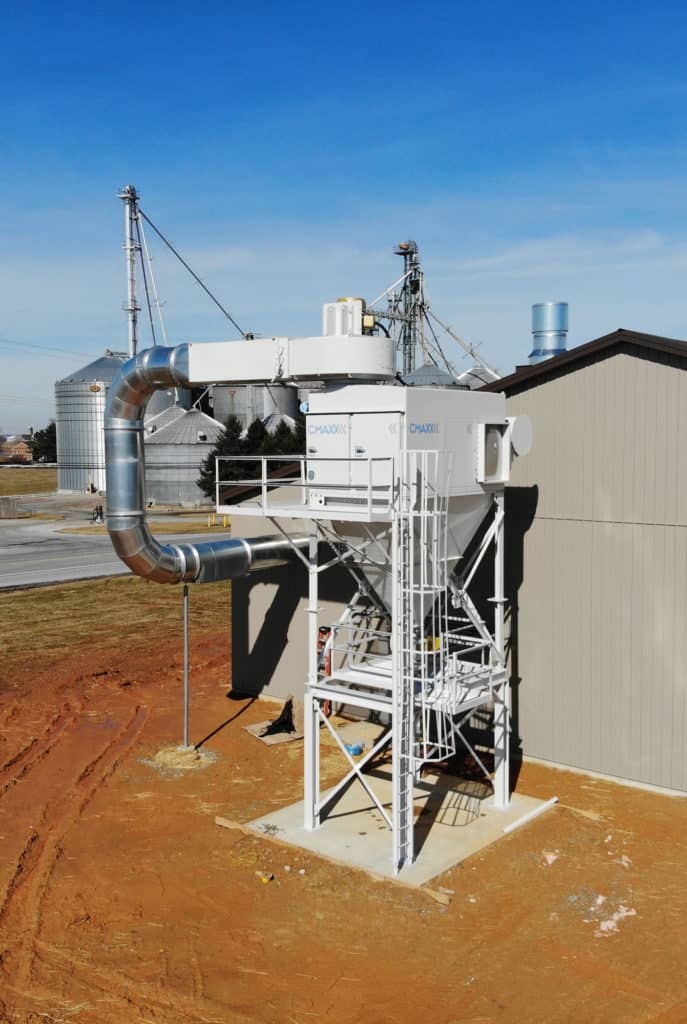
Fumes from welding and cutting metal are hazardous to breathe. Manganese exposure is just one concern. However, because it can cause neurological damage at very low levels, it’s an important issue.
Manage exposure to weld fumes with a well-designed dust and fume collection system. One solution is to use hoods, fume arms, or downdraft tables. These are all types of source capture, and they clear the air around the welder’s breathing space.
Many laser or plasma cutting tables are also downdraft tables and pull fumes down and into the dust and fume collection system.
Fumes can escape from welding stations or cutting tables. An ambient system can filter all the air in the workplace to remove these escaped fumes. As a result, the haze of smoke that some facilities have in the work area is eliminated.
To prevent welders and other metalworkers’ exposure to manganese and other hazardous fumes, contact Imperial Systems. You can also visit the product page to learn more about the CMAXX dust and fume collector.
Read more




 I started working at Imperial Systems in February 2015 as an Accounting Clerk. As the company grew over the next few years, I started taking on more responsibilities. I started helping with coordinating production, keeping information flowing between accounting and the shop. I worked with them to set schedules for shipping, hours planned for each job, and exactly where the job was with current hours.
I started working at Imperial Systems in February 2015 as an Accounting Clerk. As the company grew over the next few years, I started taking on more responsibilities. I started helping with coordinating production, keeping information flowing between accounting and the shop. I worked with them to set schedules for shipping, hours planned for each job, and exactly where the job was with current hours.





 What kind of dust collector upgrade might save your building or employees from serious harm? Some old dust collectors may not have the kind of fire and explosion prevention devices required by NFPA standards on newer equipment. In some cases, it may be a poor system design. In other cases, the company or the system designers may not have known the dust could be combustible.
What kind of dust collector upgrade might save your building or employees from serious harm? Some old dust collectors may not have the kind of fire and explosion prevention devices required by NFPA standards on newer equipment. In some cases, it may be a poor system design. In other cases, the company or the system designers may not have known the dust could be combustible.




 Importance of Correct Air-to-Cloth Ratio Calculations
Importance of Correct Air-to-Cloth Ratio Calculations
